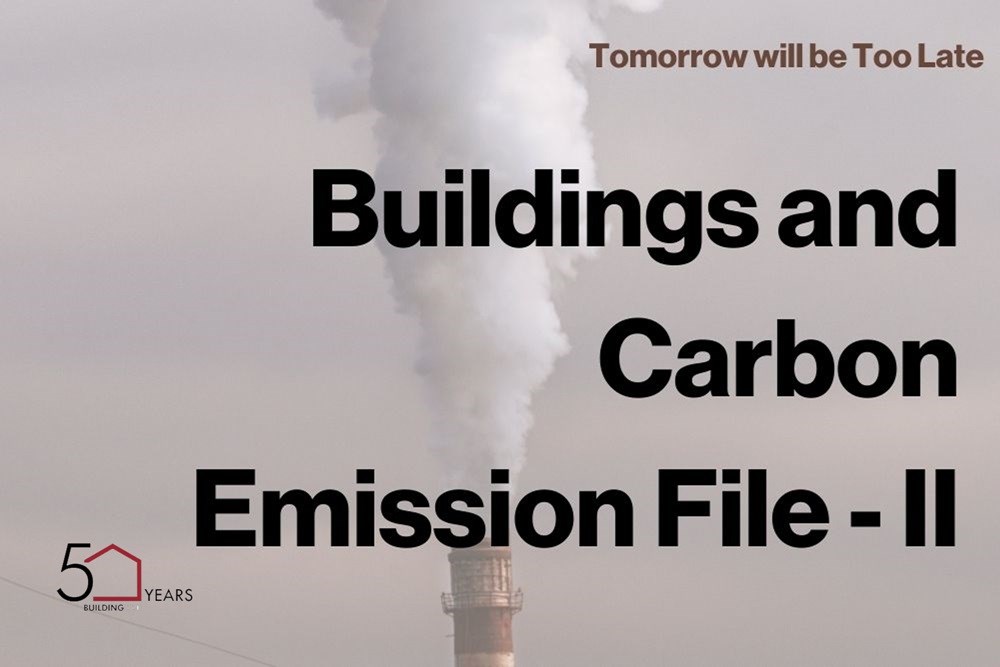
Tomorrow will be Too Late | Buildings and Carbon Emission File - II
In the first part of the "Buildings and Carbon Emission File," we discussed one of the most significant factors playing a role in climate change: carbon emission, which consists of carbon dioxide and greenhouse gases released into the atmosphere. We emphasized that buildings are responsible for a significant portion of carbon emissions. While some carbon emissions occur during the construction process of buildings, others arise during their usage. So, at which stages during the usage of buildings does carbon emerge, and how can we reduce carbon emissions into the atmosphere?
Heating and Cooling Systems
.jpg)
The heating and cooling systems in buildings constitute a significant portion of the energy consumption. Typically, this energy is obtained through the consumption of non-renewable sources such as fossil fuels, leading to a substantial release of carbon dioxide into the atmosphere. The carbon emissions increase when heating and cooling systems in buildings are inefficient or improperly utilized. At this point, the primary and most important method to increase energy efficiency and reduce the carbon emissions from buildings into the atmosphere is to ensure proper insulation.
The second most significant source of carbon emissions from buildings is the use of stoves for cooking/heating. Stoves consuming non-renewable energy sources such as natural gas or LPG contribute significantly to carbon emissions. An alternative solution to this problem could be the use of electric stoves, especially in a time when electricity is produced from renewable energy sources like solar, wind, hydroelectric systems, rather than coal or natural gas.
In conclusion, methods such as insulation, electricity produced from renewable energy sources, high-efficiency heat pumps, natural ventilation, and thermostat controls can be employed to reduce energy consumption from heating and cooling systems in buildings, thereby increasing efficiency.
Lighting Systems
.jpg)
Traditional lighting systems used in buildings, similar to heating and cooling systems, can be inefficient in terms of energy consumption and carbon emissions. However, compared to heating and cooling systems, the amount of carbon released into the atmosphere due to lighting systems is much smaller.
As a solution, opting for energy-efficient lighting technologies and products produced with new technologies such as LED bulbs will both reduce energy consumption and result in less carbon production.
Electronic Equipment
.jpg)
Electronic equipment, especially in buildings like homes and offices, constitutes a significant proportion of energy consumption. These devices include computers, printers, projectors, screens in workplaces, and appliances such as refrigerators, washing machines, dishwashers, irons, and televisions in homes.
At this point, opting for energy-efficient electrical equipment and avoiding leaving unused appliances plugged in, as well as taking small but effective actions like not running the washing machine and dishwasher unless they are fully loaded, help prevent unnecessary energy consumption and contribute to reducing carbon emissions.
Operation and Regular Maintenance of Buildings
Efficient operation of buildings, monitoring energy consumption, seeking ways to reduce it, and implementing energy efficiency measures are as important as the efficiency of heating, cooling, and lighting systems. Regular maintenance of systems is crucial as well.
In conclusion, reducing carbon emissions in buildings, which are responsible for a significant portion of the carbon released into the atmosphere, is crucial for leaving a more sustainable life for future generations. Through insulation, the preference for energy-efficient and economical systems, regular maintenance, and small individual steps, we can reduce the carbon emissions of the buildings we live and work in, making them more environmentally friendly and sustainable spaces.
____________________

